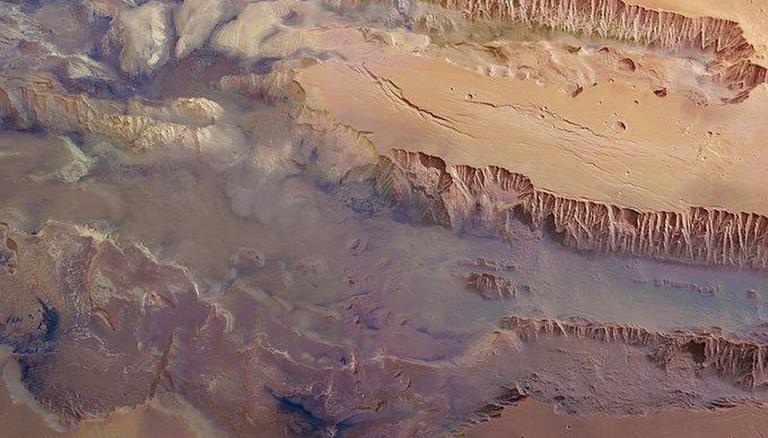Tokyo, 16 December, /AJMEDIA/
Who’s up for an adventure? You just need to catch a crewed spacecraft to Mars, land near a massive canyon there and go in search of hidden water. The ExoMars Trace Gas Orbiter (TGO) spacecraft has found evidence of “significant amounts of water” in the Valles Marineris canyon system on the red planet.
TGO is operated by the European Space Agency and Russian space agency Roscosmos. The orbiter has an instrument on board that maps hydrogen in the upper layer of Martian soil. Data shows an unusual amount of hydrogen in Candor Chaos, a central region of Valles Marineris, indicating that as much as 40% of the near-surface material in that area could be water.
“With TGO we can look down to one meter below this dusty layer and see what’s really going on below Mars’ surface — and, crucially, locate water-rich ‘oases’ that couldn’t be detected with previous instruments,” Igor Mitrofanov of the Space Research Institute of the Russian Academy of Sciences said in an ESA statement on Wednesday. Mitrofanov is lead author of a study on the water findings published in the journal Icarus.
Valles Marineris is so massive, NASA has called it “the Grand Canyon of Mars.” Except it’s much, much bigger than the US landmark. The Mars version stretches over 1,860 miles (3,000 kilometers) in length and reaches down as far as 5 miles (8 kilometers).
The water found in Valles Marineris might be tied up with minerals, but the researchers say it’s more likely to be in the form of ice. That leads to questions about how the water ice is preserved in an area of Mars where it would be expected to evaporate. “This suggests that some special, as-yet-unclear mix of conditions must be present in Valles Marineris to preserve the water — or that it is somehow being replenished,” ESA said.









































